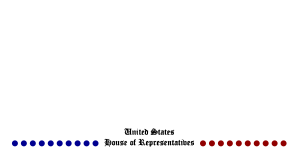This is a preview of the American League teams. You can also see my thoughts on the National League Playoff teams.
Tampa Bay Devil Rays – AL East Champions (96-66)
How they got here:
The young Devil Rays team battled the veteran Yankees for the division title and emerged victorious. They were 42-32 in the second half, but just 15-15 in the last thirty games.
Strengths:
- Rising superstar David Price went 19-6 with a 2.72 ERA
- Three starters topped 200 innings pitched
- Closer Rafael Soriano notched 45 saves and posted a 1.73 ERA
Weaknesses:
- Aside from 3B Evan Longoria and OF Carl Crawford, nobody in the lineup really scares you. 1B Carlos Pena had 28 homers, but posted just a .196 batting average. Longoria and Crawford were the only regulars with a batting average higher than .263.
- The back end of the rotation has some holes. Actually, once you get beyond Price, there’s a decent drop-off.
Player to watch:
Evan Longoria hit fewer home runs this year, but don’t be fooled – he’s one of the best young players in the game.
New York Yankees – AL Wild Card (95-67)
How they got here:
After a long duel with the upstart Tampa Bay Devil Rays, the Yankees lost the division race by a single game and ended up as the wild card. The Yankees were just 39-35 after the All-Star break, including 13-17 in September and October.
Strengths:
- Five players with 24 or more homers, led by 1B Mark Teixeira
- 21 game winner CC Sabathia and resurgent veteran Andy Pettitte both posted ERA below 3.50
- Closer Mariano Rivera remains one of the best in the game
Weaknesses:
- Only one regular with a batting average higher than .288
- Get deeper into the rotation, and there is a significant drop-off in talent level
- Derek Jeter is winding up the worst season of his career – and might be in significant decline
Player to watch:
2B Robinson Cano has always hit for good average (.309 career average is 12th highest among active MLB players), but has added a power stroke in the last few years, with 25 homer last year and 29 this year. That’s great production from a middle infield position – watch for the Yankees to become Cano’s team in the next few years.
Minnesota Twins – AL Central Champions (94-68)
How they got there: After a lackluster 46-42 record in the first half of the season, the Twins posted a 48-26 record in the second half to pull away in the division.
Strengths:
- Catcher Joe Mauer had his power numbers fall back to their normal levels, but continued to be the heart and soul of the team. He posted a .327 batting average and has the 3rd highest career batting average of any active player (also .327)
- DH Jim Thome popped 25 homers in just 340 at bats as he looks toward the end of a Hall of Fame career.
Weaknesses:
Nobody in the rotation is really a bona fide ace. Journeyman Carl Pavano led the team with 17 wins – nobody else won more than 14. Brian Duensing has looked promising (10-3, 2.62), but he has just 22 career starts under his belt.
Player to watch:
It’s seems like OF Delmon Young has been in the league forever, and many fans have already written him off as a bust. However, Young just turned 25 in September and took a significant step forward this year, hitting 21 homers to go along with a .298 batting average. There’s plenty of upside potential for Young, especially if he can take a few more walks.
Texas Rangers – AL West Champions (90-72)
How they got here: A 21-6 record in the month of June pushed them to a big lead, and they were never seriously challenged in the division race. They had the luxury of resting some players down the stretch to get them healthy for the playoffs (notably Josh Hamilton).
Strengths:
- Middle of the order hitters: OF Josh Hamilton led the league with a .359 batting average and hit 32 homers, DH Vlad Guerrerro resurrected his career with 29 homers, and OF Nelson Cruz contributed 22 homers in just 399 at bats.
- Rotation: C.J. Wilson finally got an opportunity to start and responded with 15 wins and a 3.35 ERA, while 24 year old Tommy Hunter went 13-4 with a 3.73 ERA. Veteran Colby Lewis overachieved to post a 3.72 ERA. Although mid-season acquisition Cliff Lee didn’t pitch as well as the Rangers hoped down the stretch, he’s still a force to be reckoned with in the playoffs and is the ace of the staff.
Weaknesses:
There are holes in the lineup. SS Elvis Andrus provided zero homers, and the Rangers also struggled to get offensive production out of the 1B and Catcher spots.
Players to watch:
I can’t settle on just one. OF Josh Hamilton is a great story – a former number one overall pick finally getting past his demons to break out as a superstar. 22 year old closer Neftali Feliz is one of the best young pitchers in the game. Elvis Andrus has struggled offensively, but he’s just barely 22 years old.
 RSS
RSS
